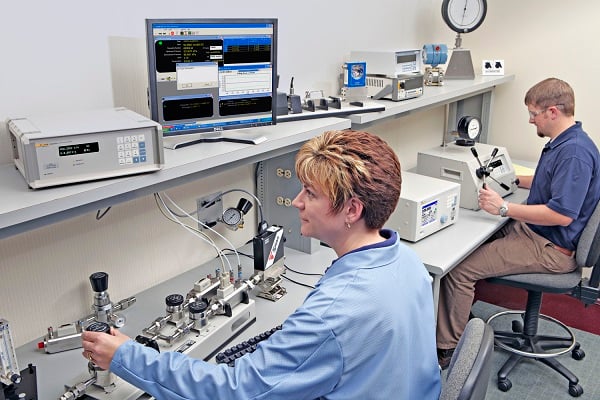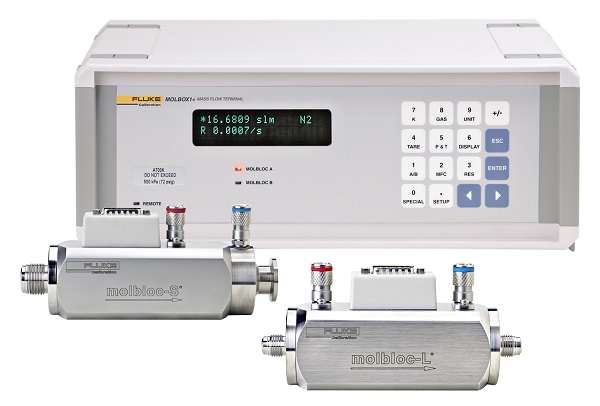- Other Fluke companies:
- Fluke
- Fluke Biomedical
- Fluke Networks
- Fluke Process Instruments
Flowmeter calibration: Five best practices you need to know

Why calibrate flowmeters?
A flowmeter measures the rate that fluid or gas moves through it. Test and measurement professionals use them in a wide variety of applications where accurate flow measurements are critical, including (but not limited to) HVAC, energy and utilities, water management, aerospace, agriculture and the pharmaceutical industry. In applications like these, it’s important to calibrate the flowmeters that make the measurements. Regular calibrations assure you that the flowmeter’s measurements are as accurate as their specifications say they are.
Even the most rugged flowmeters can fall out of calibration. All instruments’ performance degrades over time; parts wear out or break. Flowmeters can be affected by corrosion or dirt within the media that flows through them. They may also be damaged by impact, variations in the process, or by improper installation.
Best practices for calibrating flowmeters
Standard best practices in calibration apply to flowmeter calibration as they do for all test equipment; flow calibration also has some specific best practices to keep in mind:
- The standard that you use to calibrate a flowmeter must be accurate enough to perform the calibration.
The general rule of thumb is that your standard should be four times more accurate than the device under test (DUT); however, this can vary depending on the requirements of the calibration.
- Your standard should be traceable to a recognized standard.
Traceability provides an unbroken chain of documentation that shows how the measurements it makes compare to even more accurate standards. Traceable measurements help you prove that your measurements are what your flowmeter says they are, within specific ranges.
- The rate of flow between the DUT and the calibration standard must be in a steady state.
Since the flow rate of the standard and the DUT are compared in real time during calibration, the system flow rate should not vary with time.
- All media measured by the calibration standard must also be measured by the flowmeter at the same time.
In other words, there should not be any leaks or significant temperature changes in intermediary volumes that might affect the measurement.
- You should perform the calibration under conditions that are typical of the flowmeter’s actual operation.
For example, the viscosity, density or heat content of the medium being measured can affect the flowmeter based on its operating technology. It is important to match the calibration with the flowmeter’s application.

Fluke Calibration molbloc/molbox gas flow calibration systems calibrate flowmeters and controllers over a wide range of flows. They can be fully automated with COMPASSTM for Flow software.
Keep learning
“Flowmeter Calibration Landscape: A look at today’s calibration techniques & best practices” in Flow Control Magazine.
Related products
- Login or register to post comments
- Printer-friendly version »
- Home
- Products
- New Products
- Electrical Calibration
- RF Calibration
- Data Acquisition and Test Equipment
- Temperature Calibration
- Humidity Calibration
- Pressure Calibration
- Flow Calibration
- Process Calibration Tools
- Calibration Software
- Service and Support
- All Calibration Instruments
- Handheld Test Tools
- Purchase Info
- News
- Training and Events
- Literature and Education
- Service and Support
- Service Request (RMA)
- Service Plans
- Technical Support
- Knowledge Base
- Accreditations
- Authorized Service Centers
- Calibration Certificates
- Community Forum
- My MET/SUPPORT
- Product Manuals (User Guides)
- Safety Data Sheets (SDS)
- Recycle Program
- Safety, Service, and Product Notices
- Software Downloads
- Warranties
- Tools
- About Us

